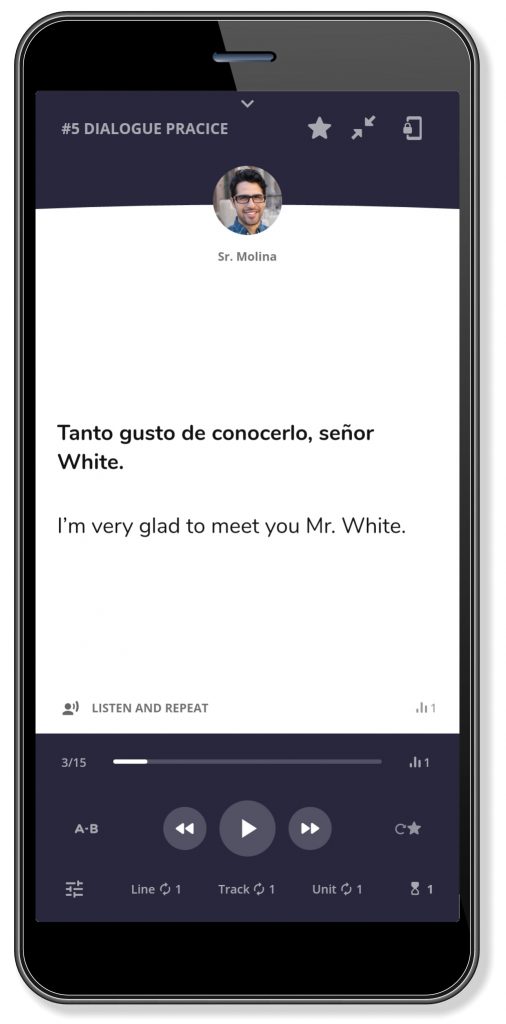Learning Spanish
Useful Phrases for Spanish Beginners
February 24, 2021

When you are learning Spanish it is very beneficial to have a basic set of phrases and vocabulary that you can rely on to get you through the majority of situations when speaking to native speakers. We call this a Spanish Conversation Toolkit.
Think of it like a mental backpack filled with useful tools that will help you get through situations where your skill in Spanish speaking isn’t quite cutting it.
This is also useful for people that are going to be travelling in a Spanish-speaking country, and just want to pick up a minimal set of Spanish phrases and expressions to help them out during their travels.
Below you will find them, organized by the situations in which you’d find them useful. Click on the Spanish to hear it pronounced.
Having Trouble Understanding Someone
This one’s at the top of the list because this is a very common problem. If you’ve been studying Spanish in an educational setting, using the Internet, or in a mobile app such as Camino, then you are used to hearing pretty clean and well pronounced Spanish.

As you may have already found out, once you get into a real world Spanish-speaking situation it can be hard to understand what someone is saying, especially if they are a native speaker. On top of that, every region of the world speaks Spanish in their own dialect (style) of the language, often making it even more difficult to understand what is being said.
In these situations, you should learn how to ask them to repeat what they said.
¿Puede repetir, por favor?
(Could you repeat, please?)or less formally
¿Cómo dice?
(What did you say?)
In this same situation, sometimes you have to ask the speaker to slow down their speech so you have a better chance of understanding what they are saying.
¿Podría hablar más despacio, por favor?
(Could you speak slower, please?)
Asking How to Say Something in Spanish
It can take years to build up a strong Spanish vocabulary. Even when you have reached advanced levels there will be words or verbs that you don’t know yet.
For this situation you can ask how to say something in Spanish.
¿Cómo se dice [thing]?
(How do you say [thing]?)
In this format you want to replace the word [thing] with the English word that you are trying to say in Spanish. Obviously, this will only work if the person you are talking to speaks some English.
¿Cómo se dice “table”?
(How do you say “table”?)
The other way you can do it is to point at, describe, or simulate what you are trying to say.
¿Cómo se dice [point at a table]?
(How do you say “table”?)
Asking if Someone Speaks English
If you need to find out if someone can speak to you in English, you can use this simple phrase.
¿Habla inglés?
(Do you speak English?)
Asking for Directions
Especially useful when traveling and visiting new places, asking for directions is pretty straightforward in Spanish.
For example, this is how you would ask for something specific, such as the bathroom in a restaurant that you are in.
¿Dónde está el baño?
(Where is the bathroom?)

If you are instead asking where something generic is, such as the nearest gas station then you’d ask a little differently, typically using “hay” instead of “está.”
¿Dónde hay una gasolinera?
(Where is a gas station?)
Talking About Money
If you are a tourist in a Spanish-speaking country then you will likely be buying things and going out to eat occasionally. Here are some phrases to help you in those situations.
¿Cuánto cuesta?
(How much does it cost?)Add the object you are asking about to be specific.
¿Cuánto cuesta una cerveza?
(How much does a beer cost?)
Greetings and Goodbyes in Spanish

The following are the most common greetings that are understood in every Spanish-speaking country.
Hola.
(hi.)Buenos días.
(Good morning.)Buenas tardes.
(Good afternoon.)Buenas noches.
(Good night.)¿Cómo está?
(How are you?)Mucho gusto.
(Nice to meet you.)
On the other side, the following are some ways of saying goodbye in Spanish.
Adiós.
(Goodbye.)Nos vemos.
(See you later.)Hasta luego.
(See you soon.)Hasta mañana.
(See you tomorrow).
Asking and Thanking Someone in Spanish
Some ways to ask for something and give thanks in Spanish are as follows.
Por favor.
(Please.)Example: ¿Puedes ayudarme por favor?
(Can you help me please?)Gracias.
(Thank you.)Muchas gracias.
(Thank you very much.)
Saying “You’re welcome” in Spanish
Here’s some ways to respond to someone that has thanked you in Spanish.
De nada.
(You’re welcome.)No se preocupe.
(Don’t mention it.)No hay problema.
(No problem.)
Saying “Excuse Me” and “Sorry” in Spanish
In daily life we say “excuse me” and “sorry” fairly often in most English-speaking countries. It’s considered polite to use these expressions when trying to move by people or when accidentally interfering with them. The same is true of Spanish-speaking countries.
Here’s how to say the equivalent of these expressions in Spanish.
(Con) permiso.
(Excuse me.)Disculpe.
(Excuse me.)Lo siento.
(I’m sorry.)Perdón.
(Pardon me.)
If you study and remember the expressions in this post then they will be very helpful to you as you use Spanish in real world situations.
Remember, the key to learning Spanish is practice and consistency. Our mobile app, Camino, has lots of free lessons, drills and flashcards that cover the topics found in this article, plus much more.



